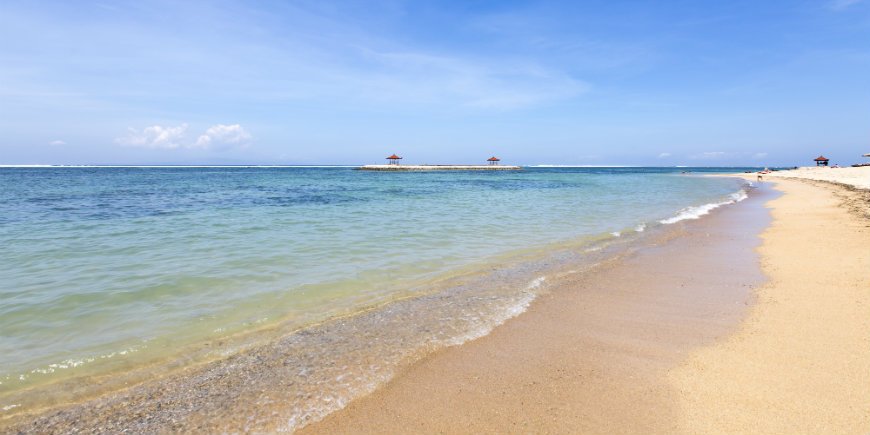When is the best time to visit Bali?
05.07.2018 | updated: 10.05.2023
A holiday in Bali offers enchanting beaches, fascinating temples and scenic rice terraces.
But when is the best time to visit Bali?
Below, you can read more about Bali’s weather and climate, and find an answer to when it is the best time for you to visit the popular holiday island.
NB: The guide below is a guideline only.
Bali’s climate

Bali is a year-round destination and can be visited in all 12 months of the year.
Bali is close to the equator and lies in the tropical climate belt.
The island does not have seasons as we know them in the UK, but two primary seasons: a rainy season and a dry season.
- The dry season is from April to September.
- The rainy season is from October to March.
As Bali lies in the tropical zone, you can expect high temperatures of between 22 degrees (average lowest temperature) and 31 degrees (average highest temperature) all year round.
The temperature becomes cooler the higher you go, and the mountainous regions (e.g. Ubud, Munduk and Sidemen) are generally cooler and receive more rain than low lying and coastal areas (e.g. Sanur, Lovina and Amed).
Not only is it cooler and rainier, but a large area of central Bali is covered with a number of active volcanoes. Bali is in an active belt where there are volcanoes and where earthquakes may occur. The belt is called the Pacific ring of fire. In autumn 2017, for example, Mount Agung erupted. Standing 3,142 m, it is the highest volcano in Bali.
Bali’s dry season
Bali’s dry season is from April to September.
The dry season is typically characterised by long sunny periods and occasional rain, but not a lot of it.
The temperatures are generally cooler than in the rainy season, and the humidity is lower, making it a pleasant time to visit the island.
The months during the dry season are the most popular with visitors to Bali, but the Christmas holidays also make December and early January a popular time to visit the island.
Outdoor activities are amazing in parts of this season because the weather and water are clear. If you want to snorkel, these are also the best months to do so.
Bali’s rainy season
Bali’s rainy season is from October to March.
Despite the fact that the rainy season offers more changeable weather than in the dry season, it is important to point out that Bali is a holiday destination with nice weather all year round.
The rainy season is characterised by rainy periods, but also a lot of hours of sunshine. It often rains at night and is sunny during the day. If it rains during the day, the sun generally comes out after a couple of hours.
The period also offers hot weather and high humidity, as well as more wind at the coast than in the dry season. However, the wind means that surfing conditions on the east coast are ideal around December due to the westerly winds.
Even though it’s rainy season, many activities are still possible. However, as a rule, you cannot trek in the highlands or climb volcanoes during the rainy season.
Bali’s weather month-by-month

January
The first month of the year is wet, humid and hot. Bali has an average of 300 mm rain in January, making it the wettest month of the year.
The coasts receive less rain than the central part of the island and the mountainous areas, making the weather very regional. So remember to check the weather, as some parts may be sunny while others have rain.
February
February is in many ways a continuation of January, but usually with less rain.
It is hot and humid. Even though the month is drier than January, an average of around 250 mm of rain falls in February. But you can still expect plenty of sunshine.
March
In the first month of spring in the UK, the rain begins to drop off in Bali. It may still be cloudy, but the sun breaks through the clouds more and more.
Temperatures are pleasant, but humidity is still high and can feel a little intense. In the mountain areas, the temperature is somewhat lower, and it can get chilly in the evening/at night, so remember to bring clothes you can layer. March is the last month of the rainy season and is therefore known as the month of change.
April
The first month of the dry season is a quiet time in Bali, with fewer visitors than normal.
Humidity is around 65%. The days are getting clearer, the temperature is high, and April is one of the months with the most hours of sunshine during the year. The wind also begins to subside at the coast, making the water ideal for scuba diving and snorkelling. Far less rain falls than in previous months, and due to the weather and fewer visitors, April is a lovely month to visit the island.
May
In May, Bali offers low humidity and typically also the hottest weather of the year, which is a pleasant combination for most people.
Look forward to sunny weather and clear waters, which is ideal for snorkelling, and fewer visitors than in high season.
June
Humidity is at its lowest from June to October, and it sometimes feels as if the sun is shining from a cloudless sky all day long and the weather is hot.
June is usually a very dry month, but there is always a chance of rain, especially in mountainous areas. The high season has not yet started, so you can expect fewer visitors than in the coming months.
July
July is the month of blue skies, with the sun shining down from a cloudless sky most of the time. The month is perfect for a variety of exciting outdoor activities. Dive in the lovely water, go on a bike ride, climb in the highlands, or enjoy a cocktail on the beach in the evening.
We’re in the middle of Bali’s high season. In July, the summer holidays start in Europe, making July a popular month with many visitors.
August
August is one of the driest and sunniest months of the year, with only around 50 mm of rainfall on average.
This month is also perfect for outdoor activities, so there’s really nothing to stop you! There is only very little – or no – rain. The hot days are replaced by a much-needed breeze in the evening. Like July, August is also popular.
September
In September, we’re still in the dry season, and you can expect sunshine, warm temperatures and very little rain, typically falling in the afternoon or evening.
The month is perfect for long days on the beach. The high season is coming to an end, and there are fewer visitors than in the previous months.
October
In October, the rainy season begins again. It is still warm with a beautiful blue sky, which can, however, be replaced by short, heavy showers.
Humidity rises during the month, and the risk of rain increases. It is still warm.
November
November is one of the months with fewest visitors. This may be because the weather in November is so changeable.
It is now quite obviously the rainy season. Showers come and go, but fortunately they are relatively short. Humidity hits 80% this month and the temperature is at the high end.
Although there is a fair bit of rain, there is still plenty of opportunity to sunbathe.
December
December has short but intense showers, but you may also be lucky enough to enjoy longer periods without rain with lots of sunshine and very hot temperatures.
It is extremely muggy with 85% humidity, hot weather and clouds in the sky. Due to the torrential rainfall, small floods may occur. Despite being one of the wettest months, December and the beginning of January are popular months due to Christmas and the New Year.
Fancy a trip to Bali?

There are many reasons why Bali was voted the world’s best tourist destination in 2017 by users of the travel site TripAdvisor, and one of them is all the magnificent experiences the island has to offer.
Would you like to visit Bali?
Please note: The above guide to Bali’s climate is a guideline only. Always check the weather forecast before your tour and contact our travel consultants if in any doubt about when to travel.
TourCompass – From tourist to traveller
